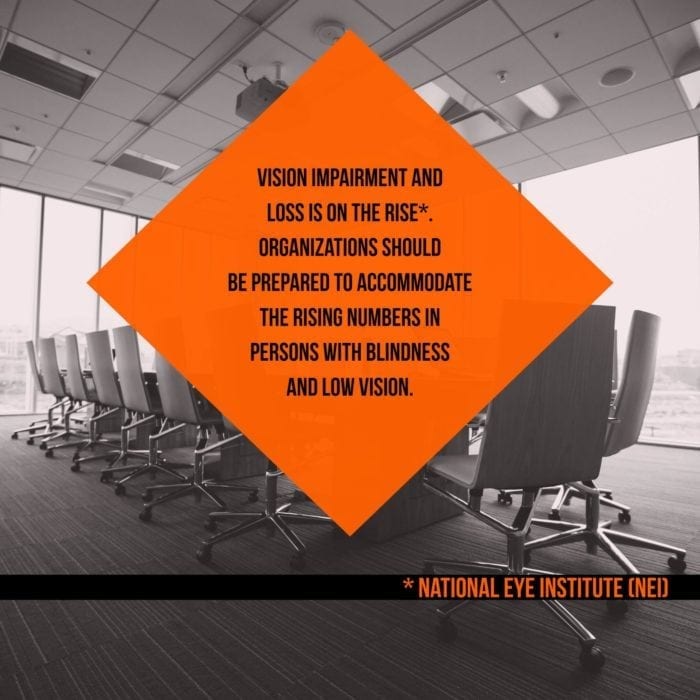The Need For Accessible Documents Is On The Rise
Published on Braille, Large Print, Audio, and WCAG AA compliant digital documents should be a vital part of your company’s business plan, for more reasons than you might think.
Braille, Large Print, Audio, and WCAG AA compliant digital documents should be a vital part of your company’s business plan, for more reasons than you might think.
Let’s look at the numbers.
How many people could possibly require braille, large print, audio, or digital alternatives to print materials?
- More than 7 million Americans ages 16 and up rely on alternatives to standard print materials, based on a visual disability or blindness, according to a 2015 report from the American Printing House.
- This number doesn’t include individuals who require an alternative to print materials for neurological based impairments like dyslexia, brain injury, and learning disabilities.
- The American Institute for Research (AIR) reports that after taxes Americans with disabilities make up 490 billion dollars of discretionary spending.
The data is overwhelmingly clear to support the purpose of the Americans with Disabilities Act (ADA) when tools are provided equality and independence are possible.
- Of the over 7 million people with visual disabilities:
- 76% graduated from high school
- 45% continued on to colleges or universities.
- 70% live above poverty levels.
How does this impact the global economy?
In a global economy, we must look at visual impairment universally.
- The World Health Organization (WHO) estimates that 285 million people in the world are visually impaired and, of those, 39 million are blind.
- 90% of those with visual impairments and blindness live in developed countries.
- 80% of the visual issues, including blindness, could have been prevented or corrected.
- In a global marketplace these numbers have significance.
Predictors for economic growth and future consumers estimate that educated Americans with blindness and visual impairments will increase.
- The Expanded Core Curriculum, designed to make general curriculum accessible for students who are blind or have a visual impairment, deems a student can only have success in the general curriculum if they have information in a format that is accessible to their specific needs.
- 50 states have reported a critical need in areas of special education.
- 13 states specifically list teachers who teach students with visual impairments (TVI).
- The predictions are clear and the future of business success is in accessibility.
Improve your business with accessibility.
Inc. Magazine shared three ways to take your business to the next level of growth.
- Find a niche market.
- People who are blind and have low vision are often overlooked by businesses as potential clients/consumers.
- Identify a growth channel and build predictability.
- Many organizations are meeting the needs of people with disabilities at a basic level, but they fail to use accessibility to generate new clients.
- Make speed a habit.
- Be the first to do it and do it fast.
In conclusion, the growing need for accessible materials is undeniable. It’s never been more important to make sure your company is prepared with the materials required by the ADA for current and future customers with visual and cognitive impairments. Start today.
Resources:
- https://nfb.org/blindness-statistics (Facts about people who are blind ages 21-64)
- http://www.who.int/news-room/fact-sheets/detail/blindness-and-visual-impairment (Updated October 2017)
- http://www.pathstoliteracy.org/expanded-core-curriculum
- https://www.air.org/resource/hidden-market-purchasing-power-working-age-adults-disabilities
Categorized in: Accessibility, Informational, Uncategorized
This post was written by




Comments are closed here.